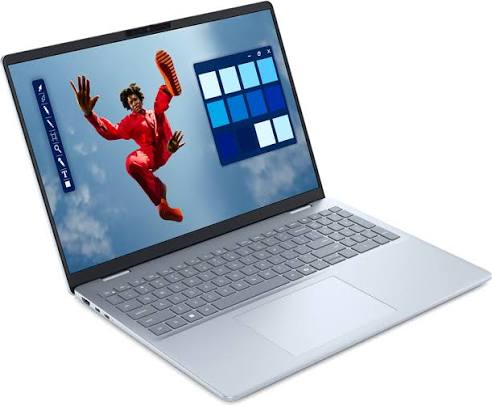The rise of counterfeit electronics has made it increasingly important for buyers to identify original laptop models before making a purchase. With fake devices flooding online and offline markets, unsuspecting buyers risk losing money on substandard machines that fail within months.
Beyond wasted investment, counterfeit laptops can compromise data security, come with no warranties, and deliver poor performance that disrupts both work and study.
This guide walks you through practical steps to help you identify a genuine laptop and avoid being deceived by counterfeits.
Why Counterfeit Laptops Are a Serious Problem
Fake laptops are often built with low-quality parts, making them less durable and unreliable. They may look identical to genuine products, but lack the processing power, security features, and after-sales support of the original.
For consumers, this means you must approach every purchase with caution. Knowing how to identify an original laptop is key to protecting both your money and your data.
1. Check the Packaging and Documentation
Authentic laptops usually come in high-quality packaging with clean prints, manufacturer logos, and sealed boxes. Counterfeit devices often have:
- Blurry printing on the box or manual
- Missing barcodes or mismatched serial numbers
- Poor-quality manuals or no documentation at all
Always cross-check the serial number on the box with the one on the laptop itself.
2. Examine Build Quality Carefully
An easy way to identify original laptop devices is by observing the physical build:
- Original laptops feel sturdy, with smooth finishes and solid hinges.
- Counterfeits may have loose screws, uneven gaps, or cheap plastic.
- The keyboard and trackpad should feel responsive, not flimsy.
Pay attention to small details like font consistency on keys, logo placement, and weight distribution.
3. Verify the Serial Number and Model Online
Every genuine laptop has a unique serial number. Visit the manufacturer’s official website to confirm it. If the system does not recognise the number, that’s a red flag.
For brands like HP, Dell, Lenovo, and Apple, you can enter the serial or service tag on their websites to check warranty status. This ensures the laptop is genuine and still eligible for after-sales support.
4. Inspect the Software and BIOS
Counterfeit laptops often run pirated operating systems that lack updates or security features. To confirm authenticity:
- Check if the laptop comes with an original copy of Windows or macOS.
- Go into the BIOS (startup screen) to confirm the manufacturer’s name and system details.
- Avoid laptops that prompt you to activate the OS using third-party tools.
5. Buy Only From Authorised Dealers
One of the most effective ways to avoid counterfeits is to buy from authorised retailers, either online or offline. Trusted platforms like Amazon, Jumia, or the manufacturer’s own store provide better buyer protection.
If you’re buying from local shops, request a receipt and warranty card. Never rely on street vendors or unverified resellers, no matter how tempting the price looks.
6. Look for Warranty and After-Sales Support
Genuine laptops come with warranty coverage ranging from one to three years, depending on the brand. Always confirm:
- Warranty validity on the manufacturer’s website
- Availability of local service centres
- Whether the laptop is covered internationally or only regionally
Counterfeits typically have no warranty or fake warranty cards.
7. Be Wary of Prices That Seem Too Good
If a deal looks too good to be true, it probably is. Fake laptops are often sold at suspiciously low prices, sometimes bundled with accessories to create a false sense of value. Always compare the price with the manufacturer’s official site or known retailers before purchasing.
Stay Informed, Stay Protected
Learning how to identify original laptop models is not just about spotting counterfeits, it’s about protecting your investment, safeguarding your data, and ensuring your device performs as expected.
By checking packaging, build quality, serial numbers, and buying only from authorised dealers, you can significantly reduce the risk of being scammed. In today’s market, knowledge is your strongest defence against counterfeits.
FAQs on How to Identify Original Laptop
How can I identify original laptop before buying?
Check the packaging, verify the serial number on the manufacturer’s website, inspect build quality, and confirm warranty status. Always buy from authorised dealers.
Can counterfeit laptops run genuine Windows or macOS?
Most counterfeits use pirated operating systems, which may look real but cannot access regular updates or support. Always check OS activation status in system settings.
Where is the safest place to buy an original laptop?
The safest options are authorised retail stores, the brand’s official website, or trusted online platforms like Amazon and Jumia. Avoid street vendors and unverified sellers.
What’s the difference between refurbished and counterfeit laptops?
Refurbished laptops are genuine devices restored by the manufacturer or certified vendors, while counterfeits are fake imitations made with substandard parts. That’s why learning how to identify original laptop is critical before purchase.
Why is it risky to buy laptops without warranty?
Laptops without valid warranty are likely counterfeit or stolen. Without warranty, you won’t get free repairs, replacements, or manufacturer support if problems arise.





